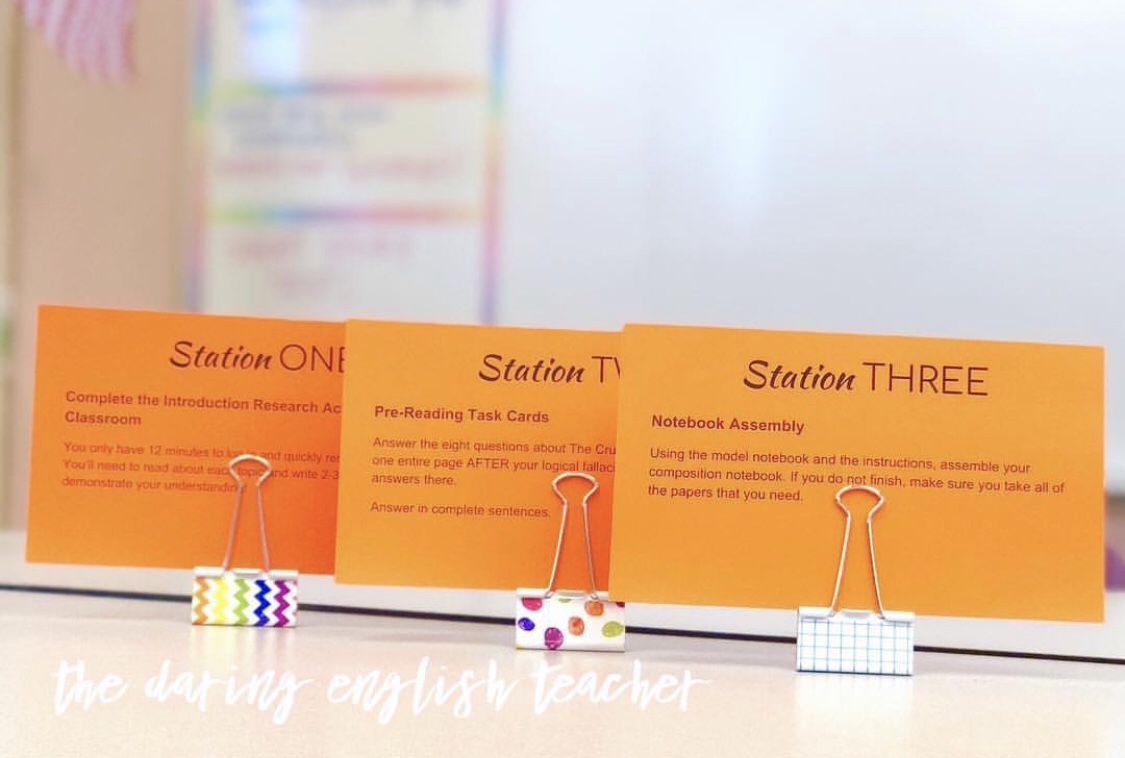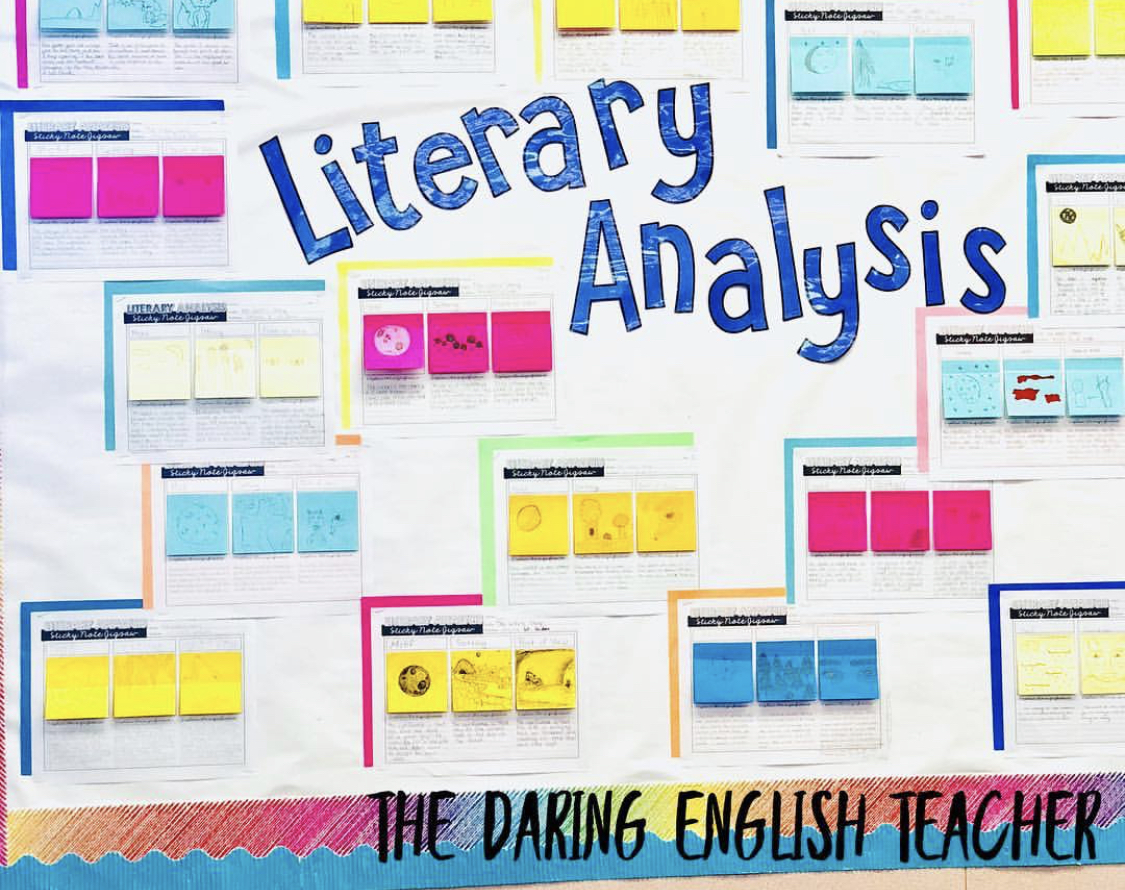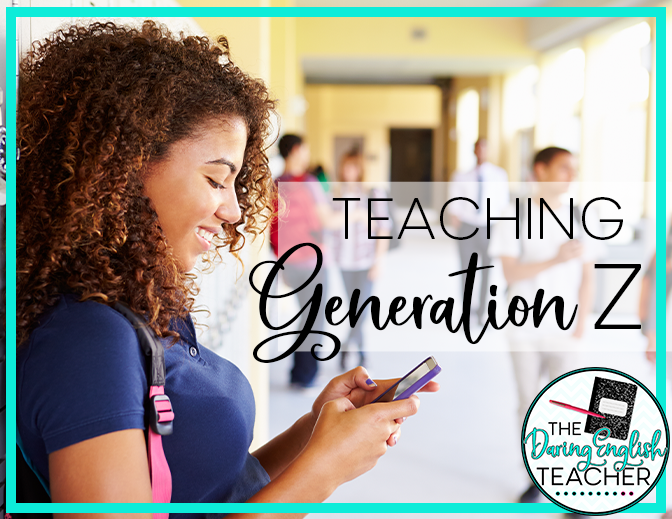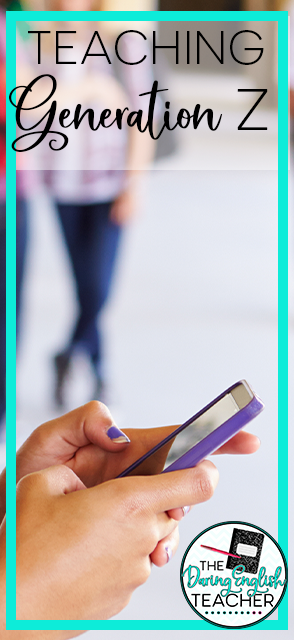Society has some less-than-desirable thing to say about our students. In the news and on social media, they are sometimes referred to as the tide-pod generation. However, we are the ones in the classroom with them, and we are the ones who truly know how amazing and incredible our students are. The teenagers in today’s classrooms are inspiring and motivating. They are capable and determined. They’ve grown up in the recession, a time in which many of our kids might have experienced economic uncertainty. Our students are Generation Z.
As a teacher in a classroom filled with Gen Z kids, it is extremely beneficial for us to know and understand who this generation is.
Generation Z is the generation that follows the Millennials. While there is some debate about when this generation begins, these are our students. As I said, they grew up in the midst of the recession, and they were not alive during (or don’t remember) September 11.
Our students have grown up in a technological age, and many of them cannot remember what life was like before the iPhone or iPad. These students are fast-paced multitaskers who have the world’s knowledge in the palm of their hands.
Our students want to be a part of the lesson, rather than passively listening. With their increased use of smartphones, and thus, scientifically-proven shorter attention-spans, classic lecture-style lessons do not work for our students. They want to experience the content with hands-on, engaging lessons and learning experiences, and they enjoy collaborative learning activities where they can work together to solve problems. As the professionals in the classroom, I believe it is our responsibility to adapt teaching styles that will best benefit our students.
Here are 3 ways to provide meaningful learning experiences to the students of Gen Z.
Learning Stations
Utilizing learning stations in your classroom is a great way to pique students’ interest. With learning stations, students work in small groups on various tasks throughout the class period. After so many minutes, students then rotate with their groups to new stations, and thus a new task and objective.
The great thing about learning stations is that you can easily Hodgepodge activities and resources together to create a unique learning station activity for your classroom. For example, if you are about to introduce a new novel in your classroom, one station can be reading the background and contextual information about the novel, one station can be previewing the book, and one station can be about brainstorming ideas and concepts students will study. If you are in the middle of a novel, you can pull out close reading passages from your current novel study and have students rotate throughout the room reading carefully selected passages for a deeper meaning.
 |
| Binder clips make great station card holders! |
When planning stations in the classroom, I like to use task cards. Using task cards in learning stations is great because students are already in the collaborative mindset, and so they are more likely to share and discuss the content on the task cards.
Mix of Digi and Traditional
Students of Generation Z have never known a time without the Internet. And while sometimes it may feel as if they are glued to their phones, our students do not want to be using technology and devices all of the time. There is real value in annotating on paper and reading real books instead of ebooks.
One way to mix traditional and digital learning is to have students outline and hand-write their first drafts on paper. As they work through the writing cycle, students can then transition to typing their essays and using edtech sites to check their grammar and spelling.
Another way to add in traditional learning is to use sticky notes in the classroom. My students love using my literary analysis, rhetorical analysis, and poetry analysis sticky note activities in the classroom for hands-on engagement.
 |
| My Sticky Note Literary Analysis unit also makes a great bulletin board! |
I am very fortunate to have a dedicated set of classroom Chromebooks for just my students. Some ways that I use these in the classroom include using Edugames for gamified learning, Google Apps for collaborative work, and traditional research.
Problem-Solving Activities
Today’s students love to solve problems, and this is one of the reasons why escape rooms are so popular in education right now. They want to feel as if their work and their input has value and meaning. Whenever I have my students work through an escape room challenge in my classroom, I have 100% engagement. Even my reluctant learners are eagerly helping out their teammates. My favorite escape room challenges are my test prep escape rooms. For test prep, I have an ELA Vocabulary, Nonfiction Reading, and Listening Skills Escape Room. These activities help students prepare for the various standardized tests they must complete. However, since the activities are fun, engaging, and collaborative, they don’t realize that they are actually doing test prep.



